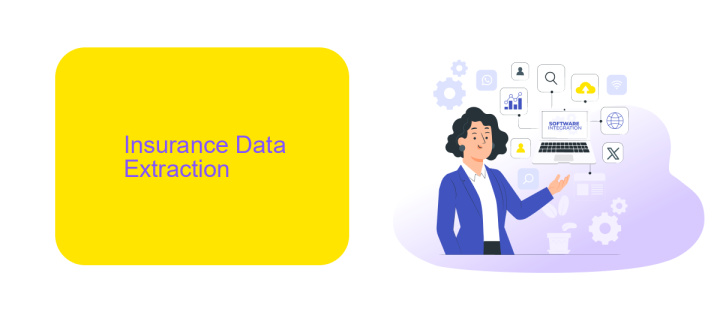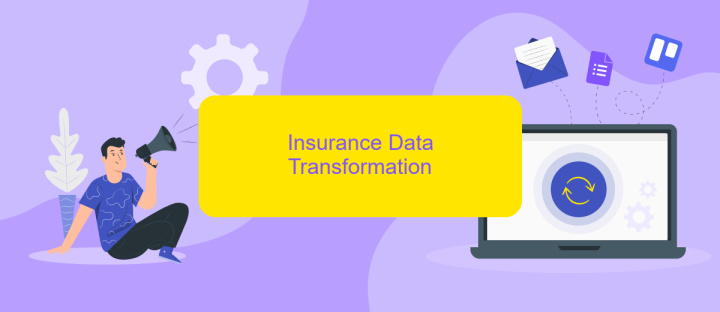Insurance Data ETL
In the rapidly evolving insurance industry, efficient data management is crucial for informed decision-making and competitive advantage. Insurance Data ETL (Extract, Transform, Load) processes play a pivotal role in consolidating disparate data sources, ensuring data quality, and enabling seamless integration into analytical systems. This article explores the importance of ETL in insurance, its key components, and best practices for effective implementation.
Introduction
The process of extracting, transforming, and loading (ETL) data is crucial for the insurance industry. ETL ensures that data from various sources is accurately integrated, cleaned, and made available for analysis, helping insurance companies make informed decisions. Given the complexity and volume of data in the insurance sector, an efficient ETL process is essential for maintaining data integrity and accessibility.
- Data Extraction: Gathering data from multiple sources such as policy databases, customer records, and financial systems.
- Data Transformation: Cleaning and standardizing data to ensure consistency and accuracy.
- Data Loading: Importing the transformed data into a centralized data warehouse or analytics platform.
Integrating various data sources can be challenging, but services like ApiX-Drive simplify this process. ApiX-Drive allows seamless integration between different applications and databases, automating data transfer and ensuring real-time synchronization. By leveraging such tools, insurance companies can streamline their ETL processes, reduce manual efforts, and enhance data reliability.
Insurance Data Extraction

Insurance data extraction is a critical step in the ETL (Extract, Transform, Load) process, enabling organizations to gather valuable information from various sources. This data can originate from multiple channels such as customer forms, policy documents, claims records, and external databases. The extraction process involves identifying and retrieving relevant data fields, ensuring that all necessary information is captured accurately and efficiently. Automated tools and scripts are often employed to streamline this task, minimizing manual effort and reducing the risk of errors.
One effective way to enhance the efficiency of data extraction is by leveraging integration services like ApiX-Drive. ApiX-Drive facilitates seamless connections between different data sources and your ETL system, allowing for real-time data extraction and synchronization. By using ApiX-Drive, insurance companies can automate the data extraction process, ensuring that up-to-date information is always available for analysis. This not only improves data accuracy but also significantly reduces the time and resources required for manual data handling, enabling better decision-making and operational efficiency.
Insurance Data Transformation

Insurance data transformation is a crucial step in the ETL process, ensuring that raw data from various sources is converted into a format suitable for analysis and reporting. This process involves several key tasks that help maintain data accuracy, consistency, and completeness.
- Data Cleaning: Removing duplicates, correcting errors, and filling in missing values to ensure data quality.
- Data Standardization: Converting data into a common format, such as standardizing date formats and measurement units.
- Data Enrichment: Adding additional data from external sources to provide more context and improve insights.
- Data Aggregation: Summarizing data to provide higher-level insights, such as calculating total claims per month.
- Data Integration: Combining data from different sources to create a unified dataset, which can be facilitated by integration services like ApiX-Drive.
By following these steps, insurance companies can ensure that their data is reliable and ready for analysis. Tools like ApiX-Drive can streamline the integration process, allowing seamless data flow between various systems and enhancing overall efficiency. This robust transformation process ultimately supports better decision-making and strategic planning.
Insurance Data Loading

Loading insurance data efficiently is a critical step in the ETL (Extract, Transform, Load) process. Ensuring the data is accurately loaded into the target system is essential for maintaining data integrity and reliability. This phase often involves various tools and platforms to streamline the process and minimize errors.
To achieve a seamless data loading process, it is crucial to establish proper integration between the data sources and the target systems. One effective way to manage these integrations is by using services like ApiX-Drive, which simplifies the connection between different platforms and automates data transfer.
- Automate data import from multiple sources
- Ensure data consistency and accuracy
- Monitor data loading processes in real-time
- Reduce manual intervention and errors
By leveraging ApiX-Drive, organizations can significantly enhance their data loading workflows, ensuring that insurance data is readily available for analysis and reporting. This not only saves time but also increases the overall efficiency of the ETL process, enabling better decision-making based on accurate and timely data.
Conclusion
In conclusion, the implementation of an efficient ETL process for insurance data is crucial for ensuring data accuracy, consistency, and availability. By automating data extraction, transformation, and loading, insurance companies can significantly reduce manual errors and improve operational efficiency. The use of advanced ETL tools and technologies enables seamless integration of various data sources, providing a unified view of critical information that supports informed decision-making.
Moreover, leveraging integration services like ApiX-Drive can further enhance the ETL process by simplifying the connection between disparate systems and automating data workflows. ApiX-Drive offers a user-friendly platform that allows for easy setup and management of integrations without the need for extensive technical expertise. This not only accelerates the ETL process but also ensures that the data is always up-to-date and readily available for analysis. Ultimately, a robust ETL strategy, supported by reliable integration services, is essential for maintaining a competitive edge in the insurance industry.
FAQ
What is Insurance Data ETL?
Why is ETL important in the insurance industry?
What types of data are typically involved in insurance ETL processes?
How can I automate the ETL process for insurance data?
What challenges might I face during the ETL process in the insurance industry?
Do you want to achieve your goals in business, career and life faster and better? Do it with ApiX-Drive – a tool that will remove a significant part of the routine from workflows and free up additional time to achieve your goals. Test the capabilities of Apix-Drive for free – see for yourself the effectiveness of the tool.

